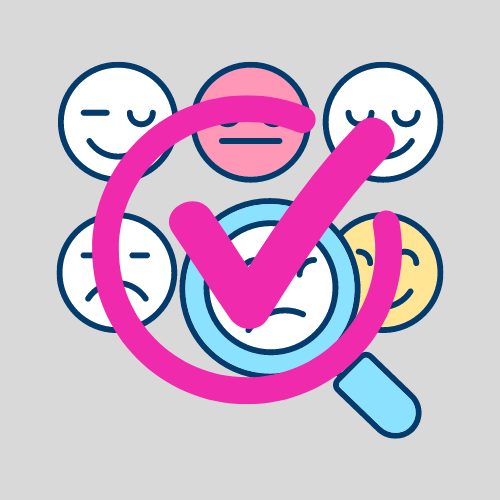To give someone emotional validation is one of the best communication tools you can have when building relationships. At home, school and in the workplace validating others’ feelings, builds mutual respect and empathy.
What is emotional validation?
Emotional validation is all about recognising, understanding and expressing acceptance of another person’s feelings. By doing this, you’re creating space for that person to experience these emotions and process things without fear of judgement or rejection.
You make them feel like their feelings matter.
It doesn’t always mean you have to agree or have the same beliefs as them. It just means, you are acknowledging their emotions and giving them a safe space for their feelings.
Why is emotional validation so important?
Because it’s beneficial for both the person you’re emotionally validating and the relationship you share!
How can we show a person emotional validation
Let them talk
Sometimes, when having emotional conversations, we’re quick to jump in with our comments, unsolicited advice or reactions. This, however, can distract and even detract from the other person’s internal experience that they’re trying to communicate.
Instead, try to stay silent and listen until the person has finished expressing their initial thoughts. Active listening shows respect and gives you the chance to completely understand the situation which will help you to better validate their emotions and offer the right kind of support.
Ask questions
Properly validating another person’s feelings also means showing investment. Even if you don’t completely agree with a person’s reaction, it’s important to show that you care not only about the what but the why as well.
Ask questions to try to prompt the other person to:
- Name how they’re feeling (naming emotions is central to acknowledging the feeling)
- Identify what caused those emotions
From here, the discussion can adopt a more actionable direction (if appropriate). Try asking questions such as:
- “I want to totally understand this—can you explain to me how that made you feel?”
- “What part of this situation made you feel most frustrated?”
- “That would have upset me. Do you feel upset at this situation?”
- “At what point of the situation did you start to feel like this?”
Acknowledging, reflecting and accepting
Once you’ve both identified how the person is feeling, you can help cultivate a space in which that person feels safe to reflect on these emotions. To express empathy and understanding, you can incorporate validating statements like:
- “I can understand why you feel that way”
- “I can tell this is really important to you”
- “What a frustrating/upsetting situation”
- “I want to make sure I’m understanding correctly. What I’m hearing is…”
- “I can see your efforts here”
- “I appreciate your honesty here”
- “What you’re saying makes sense”
- “That must have been a horrible feeling”
Ask questions
Properly validating another person’s feelings also means showing investment. Even if you don’t completely agree with a person’s reaction, it’s important to show that you care not only about the what but the why as well.
Ask questions to try to prompt the other person to:
- Name how they’re feeling (naming emotions is central to acknowledging the feeling)
- Identify what caused those emotions
From here, the discussion can adopt a more actionable direction (if appropriate). Try asking questions such as:
- “I want to totally understand this—can you explain to me how that made you feel?”
- “What part of this situation made you feel most frustrated?”
- “That would have upset me. Do you feel upset at this situation?”
- “At what point of the situation did you start to feel like this?”
What is emotional Invalidation?
Trying to advise people when they are trying to get your support, distract or make light of someone’s experiences too soon, we run the risk of making that person feel invalidated, unheard or even embarrassed for voicing their emotions in the first place.
- “Try to put this in perspective”
- “It could be worse”
- “Don’t think too much about it”
- “Just move on”
- “Well, I would feel like/think of it like this”
- “Let’s talk about something else”
- “You’re taking it too seriously”
- “You could have avoided this if you ………….”
Research shows children who experience higher levels of emotional invalidation while growing up, have higher levels of emotional distress as adults. Resulting in:
- Difficulties with emotional regulation
- Lower levels of self compassion and self worth
- Higher experiences of mental health conditions like anxiety and depression.


